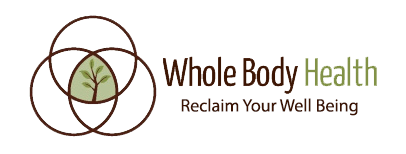Everyone knows that consuming too much added sugar is detrimental to your health. It’s bad for your teeth and for your waistline, because it ups the calorie count of many foods while offering no nutritional benefit. The weight gain that comes from these empty calories can lead to a whole host of other medical problems, including heart disease and insulin resistance, which can lead to type 2 diabetes. In addition, too much sugar in the diet can throw off hormone levels, cause headaches and result in a variety of skin conditions. But how much sugar is too much sugar?
The American Heart Association recommends men limit their added sugar to 36 grams (9 teaspoons) a day, while recommending a limit of 24 grams (6 teaspoons) a day for women, and even less for children. Considering that the average American — adults and kids alike — consumes 21 teaspoons, or 84 grams, of sugar each day, we can assume that most of us are eating too much of the sweet stuff. It actually might be more correct to say we are “drinking” too much of it, since much of the consumption comes from sugary beverages like sodas and “fruit” drinks. (A can of soda can have 40 grams of sugar!)
 Yes, many of us are quite literally addicted to sugar. As we consume more and more sugar, our bodies build up a tolerance to it, much like to a narcotic, until we require higher and higher amounts to get the same “fix.” Eating sugary foods causes us to crave more sugary foods.
Yes, many of us are quite literally addicted to sugar. As we consume more and more sugar, our bodies build up a tolerance to it, much like to a narcotic, until we require higher and higher amounts to get the same “fix.” Eating sugary foods causes us to crave more sugary foods.
The good news is, unlike with narcotics, when people briefly “quit sugar,” their sensitization to it rapidly decreases, meaning that in a very short time, consuming less sugar translates to craving less sugar. Research shows that only two weeks without it will cause your body to be less reactive to it.
If you don’t want to go on a cold turkey sugar holiday, try weaning yourself off of some of it by gradually reducing the amount you put in foods and beverages like coffee and tea. Before long, the amount you used to add will taste too sweet, and you’ll find you’re satisfied with the less sugary versions of your favorite foods.
It’s important, however, when watching sugar intake to not be tricked by labels declaring a product “low in sugar,” “sugar free” or “light,” because to make these claims true and still have the product taste the same, the sugar in these foods is often replaced with an artificial sweetener like aspartame, saccharin or sucralose (Splenda,) which all have their own toxicity issues. In addition, your brain receptors can’t tell the difference between those sweeteners and actual sugar, so while calories may go down, cravings will continue.
What about hidden sugars? They lurk in all kinds of foods that don’t even seem “sweet.” Condiments like ketchup and other sauces, many smoothies, bread, sports drinks, and almost all processed food — even some baby formulas — can have a lot of sugar on the label and in the package. When reading labels, keep an eye out for sugar, including ingredients that end in “–ose,” or those with the words “sugar” or “syrup” in their names, as those are just other words for added sugar.
If you must add sugar, and sometimes we must, try to stick with limited to moderate amounts of real cane sugar, raw honey, stevia or other natural fruit-derived sweeteners, like LoHan Fruit concentrate. And remember to include in your diet foods that are naturally sweet. The AHA recommendations pertain to added sugar, not naturally occurring sugars that appear in fruits and some vegetables. That’s because those types of food offer valuable vitamins, minerals, phytonutrients and enzymes that counteract the effects of the sugar during digestion, allowing the food to work for you instead of against you.
A healthy diet doesn’t have to be one that is void of all sweetness. The goal is to get back to that place when we had a healthy relationship with sugar, and life was just as sweet.
Resources: “Sugars, Added Sugars and Sweeteners”, http://www.heart.org, American Heart Association, Sept. 15, 2014.
